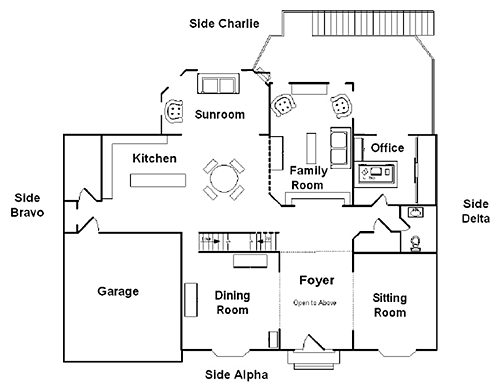Hazard of Ventilation Controlled Fires
Thursday, October 9th, 2008In the Grading the Fireground on a Curve, published in the September issue of Firehouse magazine, Battalion Chief Mark Emery warned of the hazards of assuming that limited volume and velocity of visible smoke indicates a growth stage fire. He correctly identified that compartment fires may enter the decay phase as fuel is consumed or due to a lack of oxygen.
Emery cites National Institute for Occupational Safety and Health (NIOSH) Death in the Line of Duty reports 98-F07 and F2004-14, in which firefighters initiated offensive fire attack in commercial buildings and encountered rapidly deteriorating fire conditions due to changes in the ventilation profile. Concluding the introduction to his article, Emery observes “Unless you know which side of the fire growth curve you are entering, advancing into zero-visibility conditions is really a bad idea”.
I agree with BC Emery’s basic premise that appearances can be deceiving. However, this article points to two interrelated issues. The hazards presented by ventilation controlled fires and the dangerous conditions presented by enclosed buildings. In Smoke Burns,originally published on Firehouse.com I discussed the hazards of ventilation controlled fire and the relationship of burning regime to extreme fire behavior phenomena such as flashover and backdraft. The hazards presented by ventilation controlled fires are compounded when the fire occurs in an enclosed structure (a building with limited means of access and egress). Captain Willie Mora has written extensively on Enclosed Structure Disorientation on Firehouse.com.
BC Emery illustrated how appearances can be deceiving using data and still images from a full scale fire test in a warehouse in Phoenix, Arizona conducted by the National Institute for Standards and Technology (NIST). NIST conducted these tests as part of a research project on structural collapse. However, the video footage and temperature data from this test is extremely useful in studying the influence of ventilation on fire behavior and fire behavior indicators (Building, Smoke, Air Track, Heat, and Flame (B-SAHF)). The full report and video from this test is available on-line from the NIST Building Fire Research Laboratory (BFRL).
As an oxidation reaction, combustion requires oxygen to transform the chemical potential energy in fuel to thermal energy. If a developing compartment fire becomes ventilation controlled, with heat release rate limited by the oxygen available in the compartment, pyrolysis will continue as long as temperature in the compartment is above several hundred degrees Celsius. Pyrolysis products in smoke are gas phase fuel ready to burn. Increased ventilation at this point, may cause the fire to quickly transition to the fully developed stage (ventilation induced flashover). However, if the fire continues to burn in a ventilation controlled state and the concentration of gas phase fuel (pyrolysis products and flammable products of incomplete combustion) increases sufficiently, increased ventilation may result in a backdraft.
I take issue with BC Emery’s illustration of the growth side of the fire development curve as the value side of the cure and the decay side of the curve as the no value side of the curve. Depending on resources, a fire on the growth side of the curve may exceed the offensive fire control capability of the fire department. Conversely, a fire on the decay side of the curve which is limited to a single compartment or series of compartments may be effectively controlled using an appropriate tactics in an offensive strategic mode. However, Emery’s discussion of the more subtle indicators of burning regime that may warn firefighters of a ventilation controlled fire is right on track. For more information on fire behavior indicators and fire development, see Fire Behavior Indicators and Fire Development Parts I and II on Firehouse.com.
Ed Hartin, MS, EFO, MIFireE, CFO




